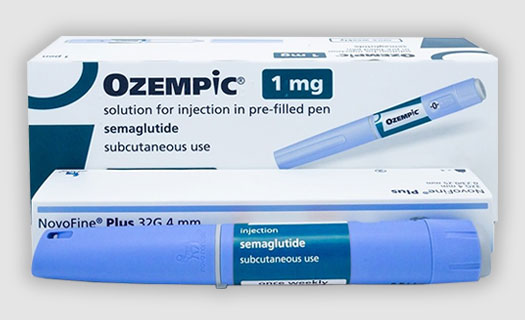Semaglutide has emerged as a revolutionary drug in the treatment of diabetes and obesity, profoundly impacting millions of lives worldwide. Its discovery and development are a testament to the advancements in medical science and biotechnology. This article delves into the history, scientific breakthroughs, and ongoing evolution of semaglutide while also exploring its significance in modern healthcare.
Early Discovery of GLP-1 and Its Role in Diabetes Management
The story of semaglutide begins with the discovery of glucagon-like peptide-1 (GLP-1), a hormone naturally produced in the gut. GLP-1 plays a crucial role in regulating blood sugar levels by enhancing insulin secretion and suppressing glucagon release. Researchers in the 1980s identified GLP-1 as a potential therapeutic target for managing type 2 diabetes due to its ability to lower blood glucose levels without causing severe hypoglycemia.
However, GLP-1’s short half-life in the human body, lasting only a few minutes, posed a significant challenge for therapeutic application. This limitation drove the need for developing GLP-1 receptor agonists, synthetic analogs that could mimic the hormone’s effects for a prolonged duration.
The Evolution of GLP-1 Receptor Agonists
The first generation of GLP-1 receptor agonists, such as exenatide, marked a significant milestone in diabetes treatment. These drugs demonstrated the potential of GLP-1 mimetics in controlling blood sugar levels and even promoting weight loss. Nevertheless, frequent injections and short durations of action limited their widespread acceptance.
Researchers sought to create a more convenient and effective solution, paving the way for the development of semaglutide. By modifying the molecular structure of GLP-1, scientists at Novo Nordisk succeeded in creating a synthetic analog with a much longer half-life, allowing for once-weekly dosing. This innovation was a game-changer, enhancing patient compliance and treatment efficacy.
The Development of Semaglutide
Semaglutide’s journey began in the early 2000s when Novo Nordisk focused on overcoming the limitations of existing GLP-1 receptor agonists. By attaching a fatty acid chain to the GLP-1 molecule, researchers enhanced its binding to albumin, a protein in the blood. This modification significantly increased the drug’s stability and extended its duration of action.
In 2017, semaglutide received approval from the U.S. Food and Drug Administration (FDA) for the treatment of type 2 diabetes under the brand name Ozempic. The drug’s efficacy in lowering blood sugar levels and promoting weight loss quickly established it as a preferred choice for many patients. Subsequent studies revealed its potential benefits in reducing cardiovascular risks, further solidifying its position as a groundbreaking therapy.
Expanding Applications: Semaglutide for Weight Management
The success of semaglutide in diabetes treatment prompted researchers to investigate its potential for weight management in non-diabetic individuals. Clinical trials demonstrated remarkable results, with participants achieving significant weight loss compared to placebo groups. These findings led to the FDA’s approval of semaglutide for chronic weight management in 2021, marketed under the brand name Wegovy.
This expanded indication has made semaglutide a valuable tool in combating the global obesity epidemic. By addressing both diabetes and obesity, semaglutide represents a holistic approach to tackling two interconnected health challenges.
The Impact of Semaglutide in the UK
Semaglutide’s introduction to the UK market has transformed the landscape of diabetes and weight management. Healthcare providers and patients alike have embraced the drug for its effectiveness and convenience. As demand continues to rise, many individuals seek accessible options to Buy Semaglutide UK from reliable sources.
The availability of semaglutide has improved the quality of life for countless individuals struggling with chronic conditions. Its dual role in managing blood sugar levels and promoting weight loss addresses the root causes of many metabolic disorders, offering a comprehensive solution.
Ongoing Research and Future Prospects
The development of semaglutide is far from over. Researchers are exploring additional applications for the drug, including its potential role in preventing Alzheimer’s disease and treating non-alcoholic fatty liver disease (NAFLD). Preliminary studies suggest that semaglutide’s effects on weight loss and metabolic health could extend to these conditions, opening new avenues for therapeutic intervention.
Moreover, advancements in drug delivery systems are being investigated to further improve patient experience. Oral formulations of semaglutide, such as Rybelsus, have already entered the market, offering a convenient alternative to injections. These innovations aim to expand the accessibility and appeal of semaglutide to a broader population.
Challenges and Ethical Considerations
Despite its numerous benefits, semaglutide’s high cost remains a barrier for many patients. Efforts to make the drug more affordable and accessible are crucial to ensuring equitable healthcare outcomes. Additionally, the rapid rise in demand has raised concerns about supply chain sustainability and the potential for misuse in non-medical contexts, such as performance enhancement.
Ethical considerations also arise in the context of weight management. While semaglutide offers a powerful tool for combating obesity, it should be used as part of a comprehensive treatment plan that includes dietary and lifestyle modifications. Promoting responsible use and preventing over-reliance on pharmacological solutions is essential for long-term success.
Semaglutide and the “Buy High UK” Phenomenon
As semaglutide’s popularity grows, so does interest in obtaining it from various sources. In the UK, individuals searching for options to buy high UK often prioritize convenience and affordability. Ensuring that patients have access to safe and authentic medications is a critical aspect of fostering trust in the healthcare system.
Conclusion
The history and developmen illustrate the remarkable progress in modern medicine. From its origins as a GLP-1 analog to its current role as a multi-purpose therapeutic agent, semaglutide has redefined the possibilities for treating diabetes, obesity, and beyond. As ongoing research continues to uncover new applications, the potential of this groundbreaking drug remains limitless.
For individuals seeking effective solutions to manage their health
offers hope and transformative results. Whether addressing diabetes or achieving weight loss goals, this innovative drug represents a beacon of progress in the fight against chronic diseases.





